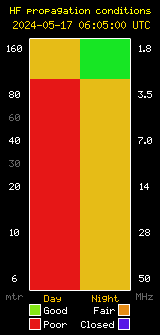November General Club Meeting: Tracking Transpacific Airliners

0:00 Pre-meeting chatter 26:30 Meeting Start and Intros 53:30 Tracking Transpacific Airliners Presentation Start 1:27:10 Questions & Answers Meeting Presentation Slides (pdf) Our November Club Meeting was host to our Board of Directors election as well as a presentation by Levi C. Maaia – K6LCM on using your ham equipment and/or computer or smartphone to listen in on transpacific airline traffic on the VHF and HF bands. Hams aren’t the only ones using HF on a daily basis for reliable, long-distance communications. Airline pilots use HF frequencies from 2800 kHz to 22 MHz as their primary means of communication with shore stations during oceanic flights. These comms can be received by anyone with an HF SSB tuner and provide interesting data points for HF propagation. Aircraft are even sending PSK over HF! Levi showed us a tracking demonstration of a flight from Los Angeles (LAX) to Sydney (SYD) as well as pointed us toward some resources for tracking and listening in on our own, with or without a radio!









